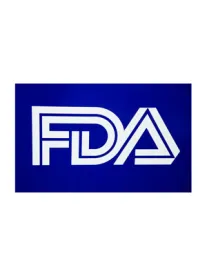On April 28, 2015, FDA released three final versions of guidance documents relating to biosimilars that were initially released in February 2012. One of the guidances provided Questions and Answers regarding implementation of the Biologics Price Competition and Innovation Act (BPCIA). The final version of the Q & A document noticeably did not contain several questions present in the earlier draft of 2012. The reason for the deletion was speculated to be tied to FDA reconsidering their earlier assessments to these questions. The draft guidance released on May 12, 2015 – Biosimilars: Additional Questions and Answers Regarding Implementation of the Biologics Price Competition and Innovation Act of 2009 – clarifies FDA’s position on those deleted questions. Specifically, the Q & As are grouped in the following categories: (1) biosimilarity or interchangeability; (2) Provisions Related to Requirement to Submit a BLA for a “Biological Product;” and (3) Exclusivity. It is important to note that while some of the Q & A addresses interchangeability, the new draft guidance is not the long-awaited interchangeability guidance that is due to be released.
Perhaps the answer to the question most eagerly awaited was whether an applicant can obtain a determination of interchangeability in an original 351(k) application – to which the FDA answered Yes. However, FDA added the caveat that, at this time, it would be difficult as a scientific matter for a prospective biosimilar applicant to establish interchangeability in an original application given the statutory standard for interchangeability and the sequential nature of that assessment. Thus, FDA left the specifics regarding the particulars for demonstrating interchangeability to another day.
A previous question also related to whether a drug-drug interaction study was generally need for licensure of a biosimilar. FDA stated that in general, a proposed biosimilar product may rely upon the reference product’s clinical evaluations. If such studies were not required for the reference product, then these data generally would not be needed for licensure of the proposed biosimilar product. However, if the BLA holder for the reference product has been required to conduct postmarket studies or clinical trials to assess or identify a certain risks and those studies have not yet been completed, then FDA may impose similar postmarket requirements on the biosimilar applicant.
How long and in what manner should biosimilar applicants retain reserve samples of the biological products used in comparative clinical PK and/or PD studies intended to support a 351(k) application was also clarified. FDA recommends that the sponsor of a proposed biosimilar retain reserve samples for at least 5 years following a comparative clinical PK and/or PD study of the reference product and the proposed biosimilar product that is intended to support a submission under section 351(k). For a 3-way PK similarity study, samples of both comparator products should be retained, in addition to samples of the proposed biosimilar product.
FDA also introduced two new questions relating to biological products. First, FDA addressed, how applicant biosimilar applicant can demonstrate that its proposed biosimilar product has the same “dosage form” as the reference product when the latter is intended to be injected? The BPCIA requires that an applicant must demonstrate that the dosage form of the proposed biosimilar or interchangeable product is the same as that of the reference product. For purposes of implementing this statutory provision, FDA considers the dosage form to be the physical manifestation containing the active and inactive ingredients that delivers a dose of the drug product. In the context of proposed biosimilar products intended to be injected, FDA considers, for example, “injection” (e.g., a solution) to be a different dosage form from “for injection” (e.g., a lyophilized powder). Thus, if the reference product is an “injection,” an applicant could not obtain licensure of a proposed biosimilar “for injection” even if the applicant demonstrated that the proposed biosimilar product, when constituted or reconstituted, could meet the other requirements for application. To that end, FDA also considers emulsions and suspensions of products intended to be injected to be distinct dosage forms as well.
Second, FDA addressed whether a non-U.S.-licensed product that is proposed for importation and use in the U.S. in a clinical investigation intended to support a proposed biosimilar development program (e.g., a bridging clinical PK and/or PD study), is required to have a separate IND FDA proposed that the answer is No. A sponsor may submit a single IND for its proposed biosimilar development program, and may submit information supporting the proposed clinical investigation with the non-U.S.-licensed comparator product under the same IND. With respect to chemistry, manufacturing, and controls (CMC) information, a sponsor should submit to the IND as much of the CMC information as is available, but FDA recognizes that a sponsor may not be able to obtain all of the CMC information required for a non-U.S.-licensed comparator product for which it is not the manufacturer.
Interestingly, FDA addressed the new issue of what type of marketing application should be submitted for a proposed antibody-drug conjugate? Because FDA considers an antibody-drug conjugate to be a combination product composed of a biological product constituent part and a drug constituent part, they proposed that a BLA should be submitted for a proposed monoclonal antibody that is linked to a drug.
FDA also provided some additional information regarding the requirement for pediatric assessments. They also addressed exclusivity by stating that an applicant may include in its BLA submission a request for reference product exclusivity and FDA will consider the applicant’s assertions regarding the eligibility of its proposed product for exclusivity. FDA pointed to the guidance “Reference Product Exclusivity for Biological Products Filed Under Section 351(a) of the PHS Act” for the types of information that reference product sponsors should provide to facilitate FDA’s determination of the date of first licensure for their products.




 />i
/>i

